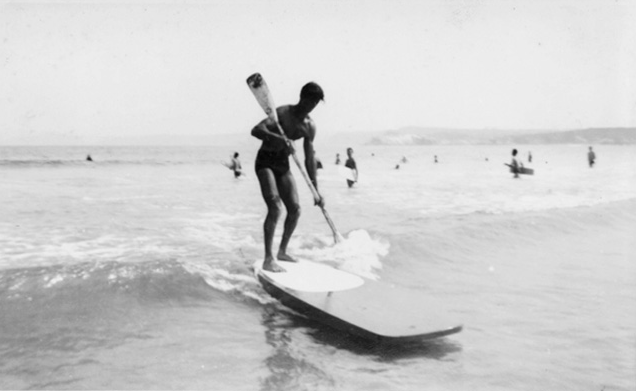
Paddleboarding, a versatile and invigorating water sport, offers a unique combination of tranquility and adventure to enthusiasts worldwide. This article delves into the history of paddleboarding, outlines the different types of equipment used, and explores its growing popularity and potential future inclusion in the Olympics.
Modern Innovations: The Contribution of Thomas Edward Blake
The modern era of paddleboarding began with Thomas Edward Blake, who revolutionized the design of paddleboards in the early 1930s. While restoring historic Hawaiian surfboards, Blake constructed a lighter, hollow board that significantly influenced both surfing and paddleboarding. His innovations led to the popularization of paddleboarding in the United States, particularly with the use of his designs for lifeguarding and recreational crossings, such as the famed Catalina Classic—a 29-mile race from the Mainland to Catalina Island which Blake won impressively in under six hours.

Renaissance and Revival in the 1980s
The 1980s marked a significant resurgence in paddleboarding, largely due to high-profile races and the influence of key figures like Rabbi Norm Shifren and surf journalist Craig Lockwood. Their efforts, along with those of shapers like Joe Bark and Mike Eaton, propelled the development of high-quality paddleboards that are still celebrated today. The revival was not just limited to craftsmanship but also included the re-establishment of iconic races like the Catalina Classic and new competitions in Hawaii, drawing a wider audience to the sport.
Equipment: Choosing the Right Paddleboard
Paddleboarding equipment has evolved to cater to different environments and skill levels. Here’s a breakdown of the common types of paddleboards:
- Stock Boards: At 12 feet long, these are ideal for lighter paddlers and offer good maneuverability and speed in choppy conditions.
- 14-Foot Class: These boards provide a balance between speed and stability and are preferred in many racing events.
- Unlimited Boards: The fastest of all, these can exceed 17 feet and are designed for maximum speed over calm waters. They often come with built-in rudders to aid steering.
- 10′ 6″ Class: Specifically designed for surf and sprint races, these shorter boards are agile and responsive in the surf.
Materials like fiberglass, epoxy, and carbon fiber are commonly used, each contributing to the board’s strength, durability, and performance. Advances in materials such as epoxy surfboard technology have led to lighter and stronger boards, enhancing the paddleboarding experience.
The Future of Paddleboarding
The increasing popularity of paddleboarding has sparked discussions about its inclusion in future Olympic Games. This move, debated by bodies like the International Surfing Association and the International Canoe Federation, reflects the sport’s growing status as a competitive and recreational activity.
Conclusion
From its ancient Polynesian origins to its modern resurgence, paddleboarding remains a fascinating blend of culture, innovation, and sport. As it continues to evolve and expand its reach, paddleboarding not only offers a challenging physical workout but also connects its practitioners to a vibrant history and a potentially Olympic-level future.

Leave a Reply